Best trees for front yards – 10 varieties to suit all types of gardens
Transform your outdoor space with the best trees for front yards
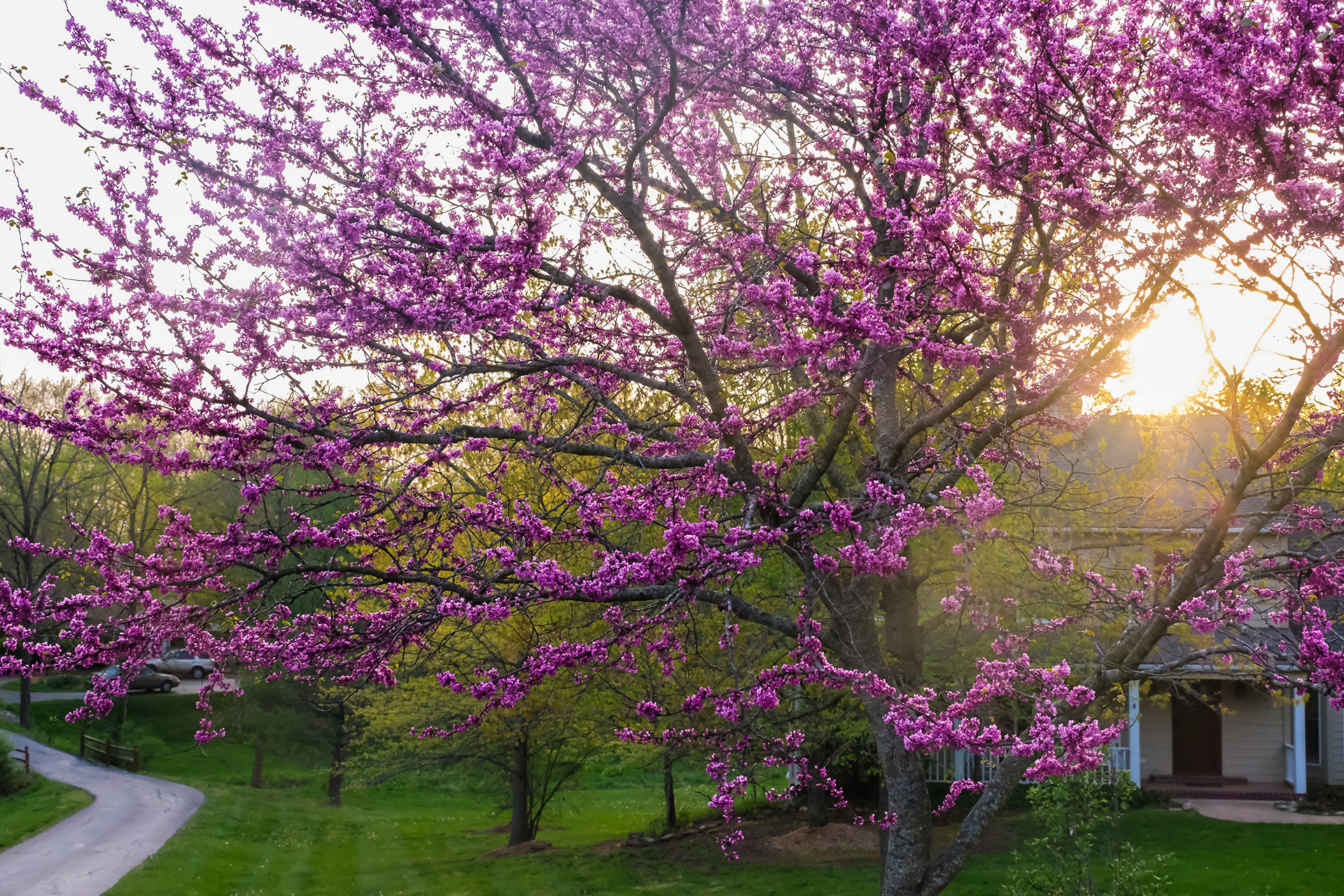

By choosing the best trees for front yards, you can completely transform your front garden design. The right tree adds height to the garden landscape and creating a point of architectural interest around which the rest of the garden design can be orientated.
However, with limited space available, selecting the right tree is key. It is important to look for a tree that can comfortably grow in a small garden – and one that will add year-round interest to your front yard landscaping ideas.
'While really any tree can be grown in the front yard, the best varieties are those that offer some kind of ornamental value such as flower, leaf color, or general texture,' advises Blythe Yost, CEO of the online landscape design company Tilly, 'A few well placed shade trees will lend significance and grandeur to your property for years to come – they are a great investment and will do wonders for your curb appeal.'
Best trees for front yards
When choosing the best trees for front yards, it is important to first work out what you want from the tree. Do you want the tree to offer privacy or do you want it to be a stand out feature in your front yard? Are you looking for something to bring color to your outdoor space, or would you rather something low-maintenance that doesn't drop a lot of leaves come fall? Think size, too, since it's likely that you'll be looking for trees for small gardens, rather than ones suited to larger spaces.
It's also vital to factor in the conditions of your front yard – what sort of soil do you have, is it a north-facing garden or south-facing garden plot, do you have extreme summers and/or winters? All of these things will impact the long-term health and subsequent appearance of the tree – an unhealthy, drooping tree is never going to be one of the best trees for front yards.
‘Make sure the tree you select will thrive in the growing conditions. This includes the type of soil, wind, rainfall, winter cold and summer heat. Check the tag for this information as well as the mature height and spread,’ advises certified arborist and garden expert Melinda Myers. ‘Contact your University Extension service, local garden center, nature center, landscape professionals, certified arborists, or other more localized tree resources to find trees suited to their climate.’
1. Magnolia
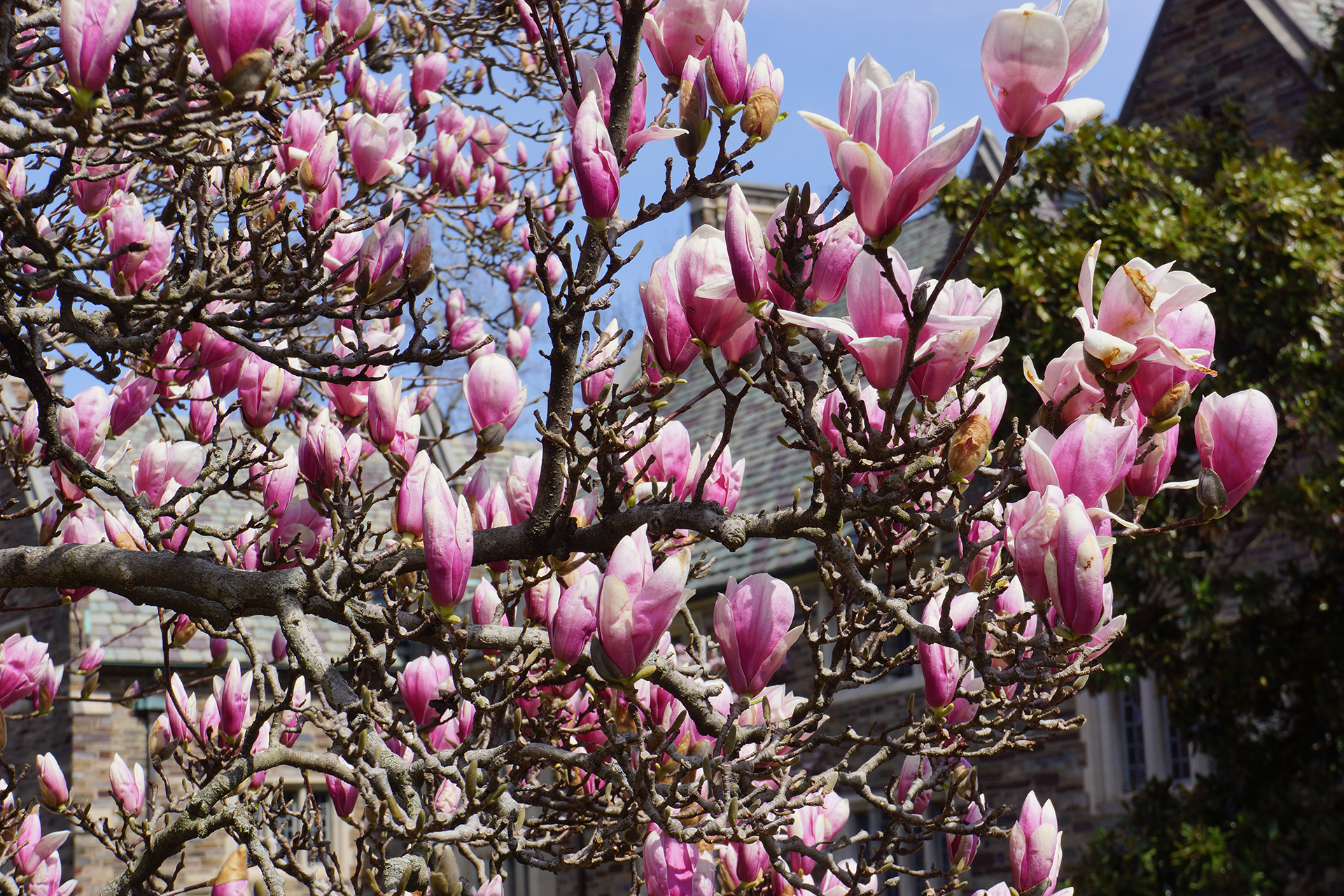
A herald of spring, magnolia is loved for its beautiful goblet flowers and sweet fragrance. There are lots of different varieties, from smaller varieties like Magnolia Black Tulip which reaches about 10 feet at maturity, through to evergreen cultivars such as Magnolia grandiflora that are fairly mess free and offer year-round privacy.
Design expertise in your inbox – from inspiring decorating ideas and beautiful celebrity homes to practical gardening advice and shopping round-ups.
Magnolia stellata is a popular choice for front yards as it has a small stature but still produces a stunning array of flowers. In fact, it can even be grown in a container so is ideal if you don't have the space to plant a tree in the ground.
Magnolia trees are suited to USDA zones 7 to 9. One thing to note is that most magnolia trees prefer slightly acidic soil and full sun, though there are some varieties that can tolerate more neutral soil so be sure to do your research when looking for the best trees for front yards.
2. Pink Flowering Dogwood (Cornus florida rubra)
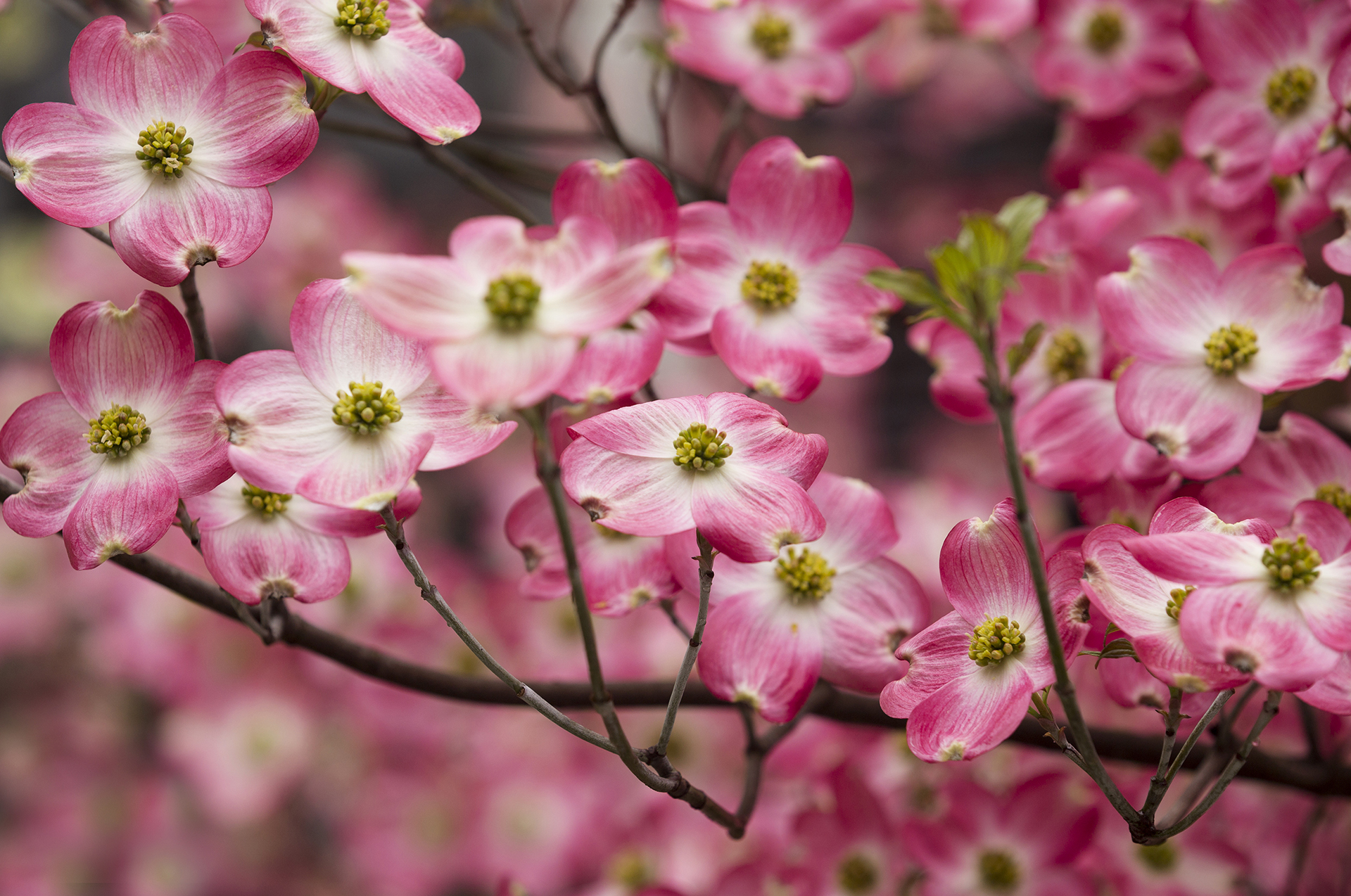
'When I have a design request from a client that centers around planting trees, I always recommend going for species that attract pollinators and animals,' advises Jane Clarke, landscape expert from Fantastic Gardeners.
Native to Eastern US, Pink Flowering Dogwood is one of the best trees for front yards if you want to attract wildlife into your garden. In spring, its stunning pink blooms will last for up to 4 weeks. Your tree will be rich with bees and butterflies enjoying the nectar. Once its flowered, the bright green leaves of its summer foliage will turn a deep, eye-catching purple shade throughout fall. Tolerant between USDA zones 5 to 9, the berries that the Pink Flowering Dogwood produces in the cooler months will become a mainstay for feeding birds in winter.
3. Paper Bark Birch (Betula papyrifera)
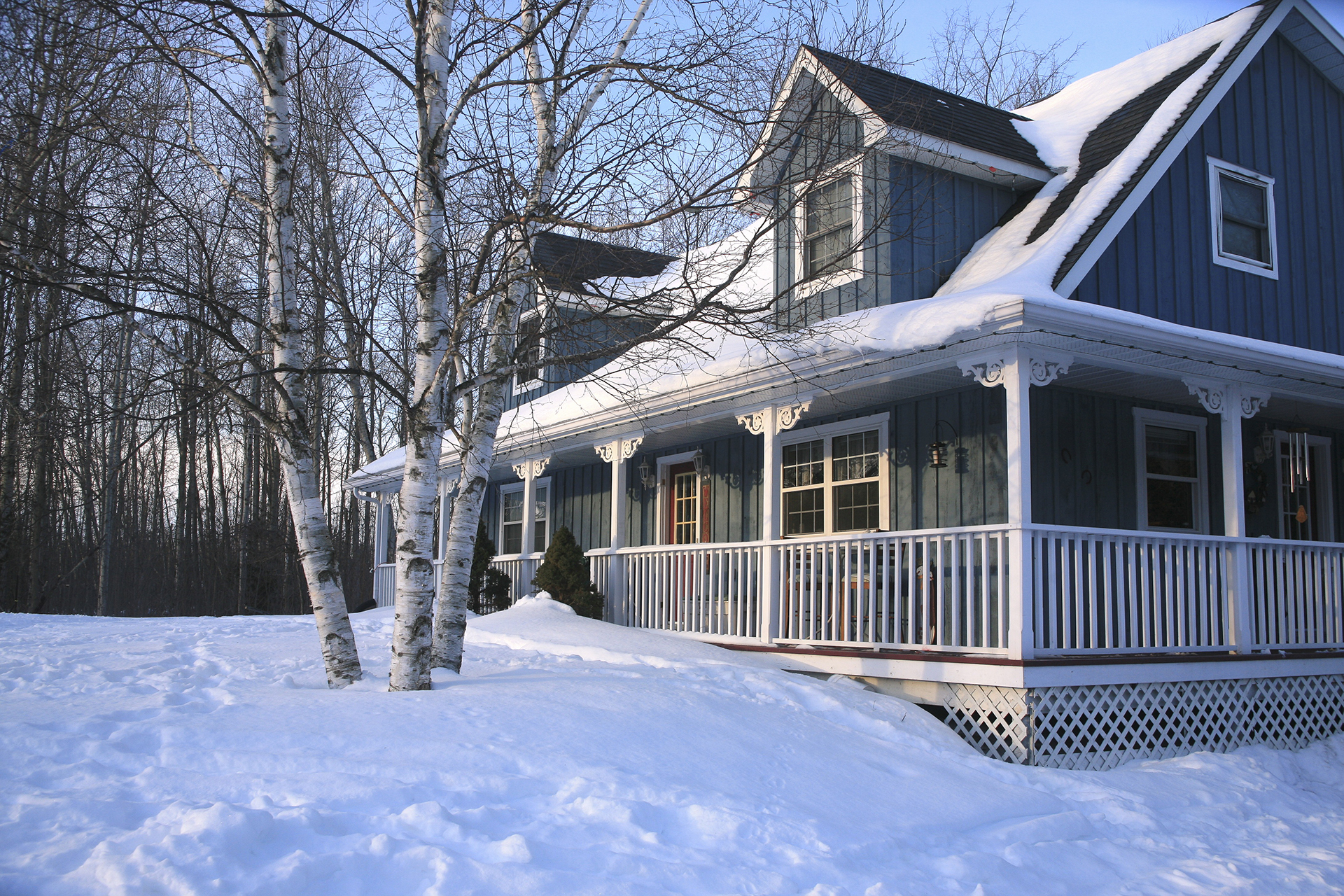
Named for its beautiful white bark, which curls and peels into layers when the tree is mature, the paper bark birch would make for a beautiful centerpiece in a front yard. Famed for being the state tree of New Hampshire, it is a popular nesting site for woodpeckers, blue jay, nuthatches, chickadees and swallows. Able to thrive in gardens in USDA zones 2 through to 7, the paper bark birch is one of the best trees for front yards in colder parts of the country.
4. Wisteria
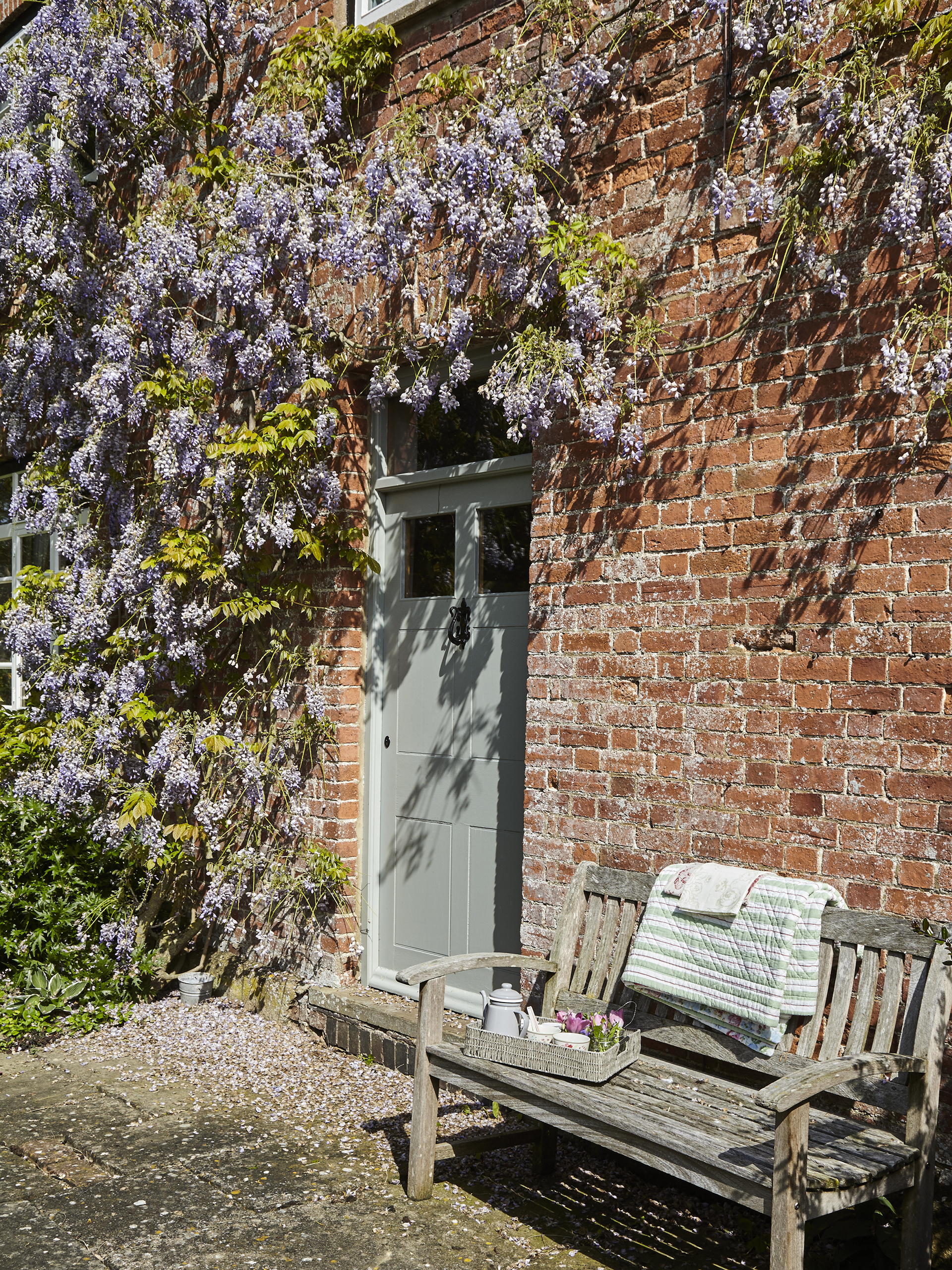
A staple of the cottage garden, wisteria is a romantic addition to any front yard. Whether you decide to grow wisteria up the wall of your house, on an archway over your front path, or over a garden fence, it adds color and character to your home.
Most varieties are tolerant from zones 5 to 9, though Kentucky wisteria – which is native to North America rather than Asia – can be grown even in zone 3. If growing wisteria, it is important to know how to prune wisteria as this will keep it in good condition and ensure an abundance of flowers.
5. Green giant arborvitae (Thuja x. ‘Green Giant’)
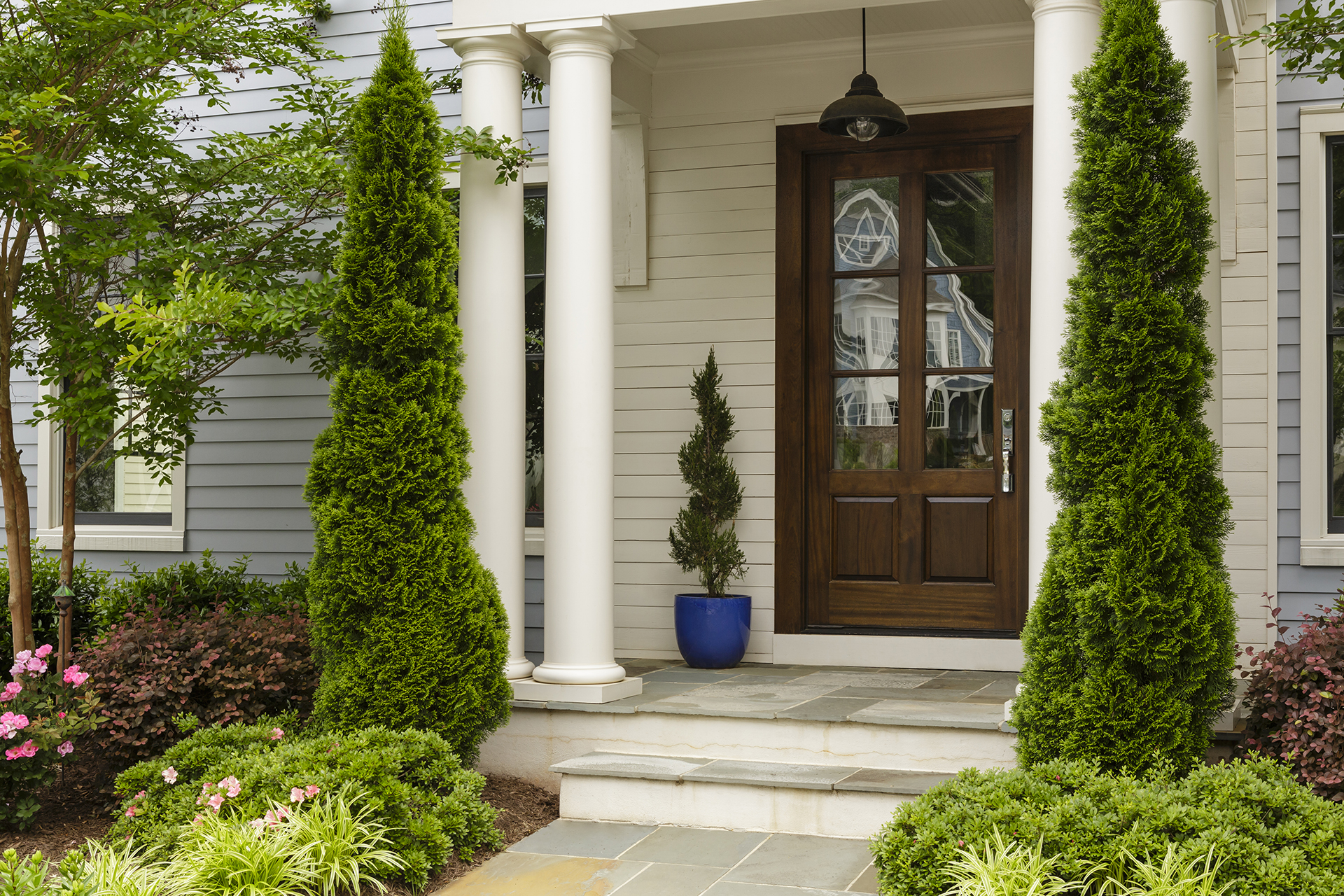
If you're looking for an architectural, easy to care for, evergreen tree, then green giant arborvitae are one of the best trees for front yards. 'A moderately fast-growing evergreen conifer (3 feet per year), green giant arborvitae are easy to grow and low maintenance making them a great choice for front yards, especially in zones 5 to 9,' suggests Tammy Sons, CEO of TN Nurserys.
Their conical shape and their height – growing up to 60 feet tall – makes them a great focal point for year-round interest. Consider planting either side of a front porch to frame the house, then underplant with flowers and small shrubs for further interest.
6. Redbud tree (Cercis canadensis)

This beautiful tree is one of the prettiest trees to grow in the front yard and is suitable for planting from zones 4 through 8. Its bright pink blooms erupt at the start of spring, before the pretty heart-shaped leaves develop later in the season creating a colorful welcome to your home. Growing to 20 feet tall, and around 20 feet wide, this deciduous tree is also relatively small which makes it perfect for front yards.
7. Crape myrtle (Lagerstroemia)

If you are looking for a tree that produces plenty of flowers, then crape myrtle is one of the best trees for front yards. Exploding in a profusion of pink blooms in summer and retaining them well into the fall, they are popularly known as the lilac of the south.
Tolerant in USDA zones 7 through to 10, the crape myrtle is a fairly small tree – only growing up to 15–25 feet tall – making it a great addition for small front yards. 'The Crape Myrtle trees bring a lot to the table in terms of augmenting your front yard with color that is year-round,' says Luke Kalawsky, manager of Central Phoenix Moon Valley Nurseries . 'The Crape Myrtle is easy to care for and is moderately drought-resistant once established.
Crape myrtle needs full sun and thrive best in hot and dry conditions, so if you live in an area with high humidity, then they are best avoided as they are susceptible to mildew.
8. Tibetan cherry tree (Prunus serrula)
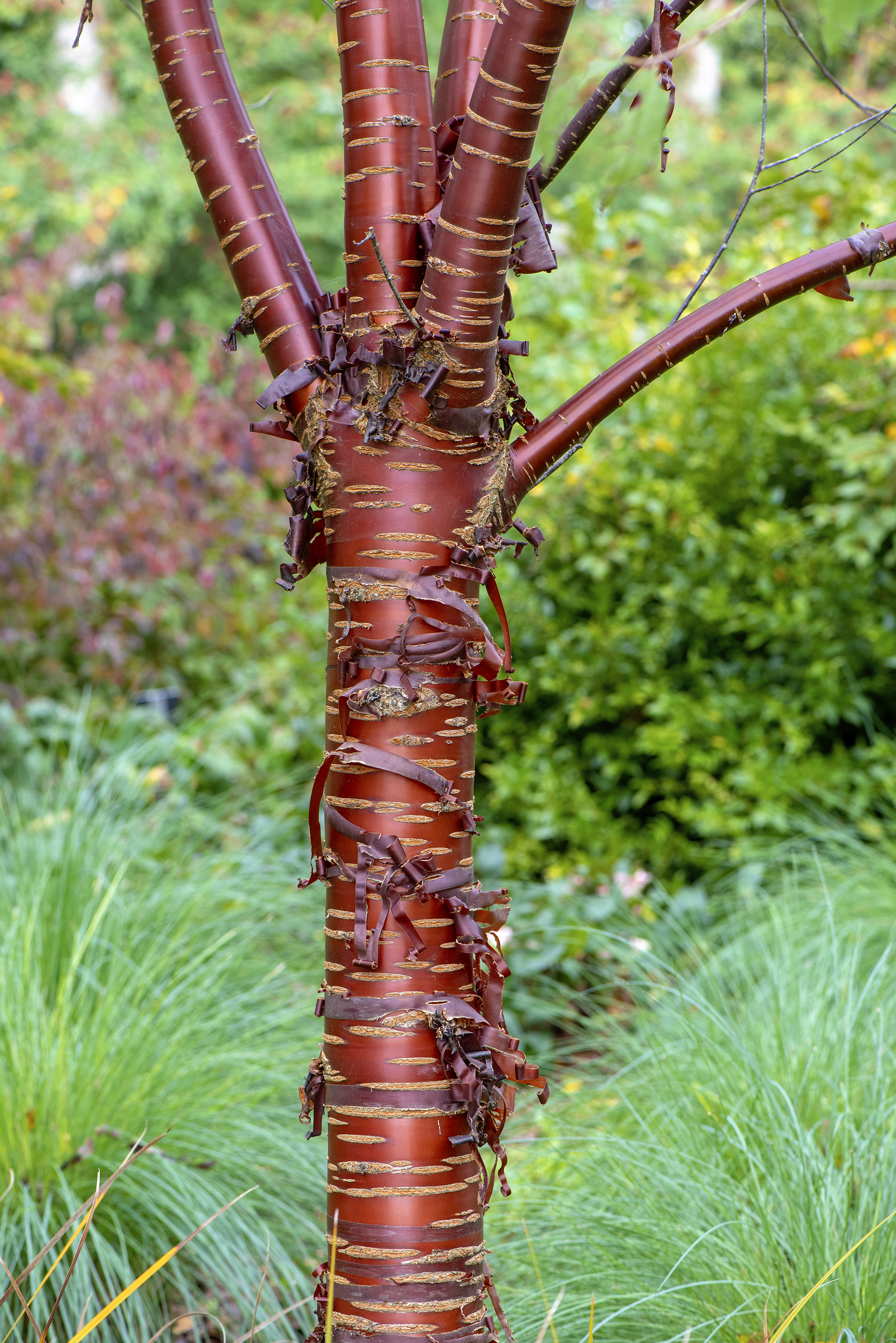
Tibetan cherry trees are one of the best trees for front yards due to its eye-catching color and interesting shape. Growing in zones 6 to 8, its beautiful, polished mahogany bark creates a stunning feature that adds color and interest all year around, especially come winter when the red bark pops against white snow. Then come spring, it erupts in a host of delicate white flowers, which contrast the deep red bark for a stunning display.
9. Callery Pear (Pyrus calleryana)
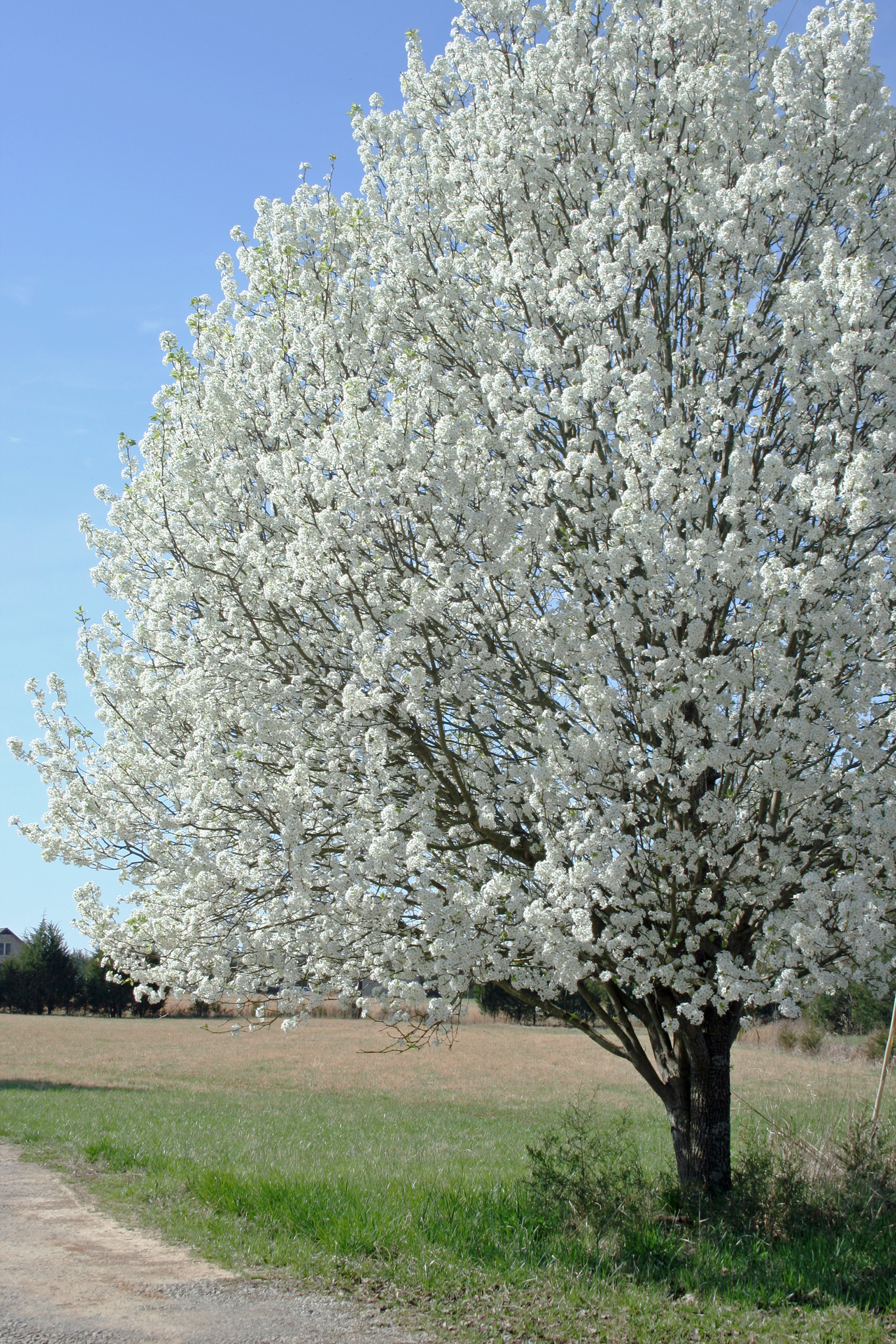
If you're just going to have one tree in your front yard then you need to pick a hardworking variety that will make a statement. The Callery pear, also known as the flowering pear or Bradford pear starts the year with a profusion of late winter and early spring flowers, while its bright green leaves darken throughout the year, shifting to a deep orange-red hue in the fall – the quintessential fall tree.
'The Flowering Pear is moderate to fast-growing and needs low to moderate watering once established. Flowering Pears love sun exposure and are highly resistant to fire-flight, making the tree a great choice for firescaping,' advises says Luke Kalawsky, manager of Central Phoenix Moon Valley Nursery.
A large tree, growing up to 50 feet tall and tolerant through USDA zones 4 to 8, it is a great choice if you are also looking for a tree that will add shade and privacy to your front yard. 'Prune to maintain desired canopy shape and size, and fertilize monthly from early spring to fall to receive fullest flower potential,' continues Luke.
10. Bay tree in planter
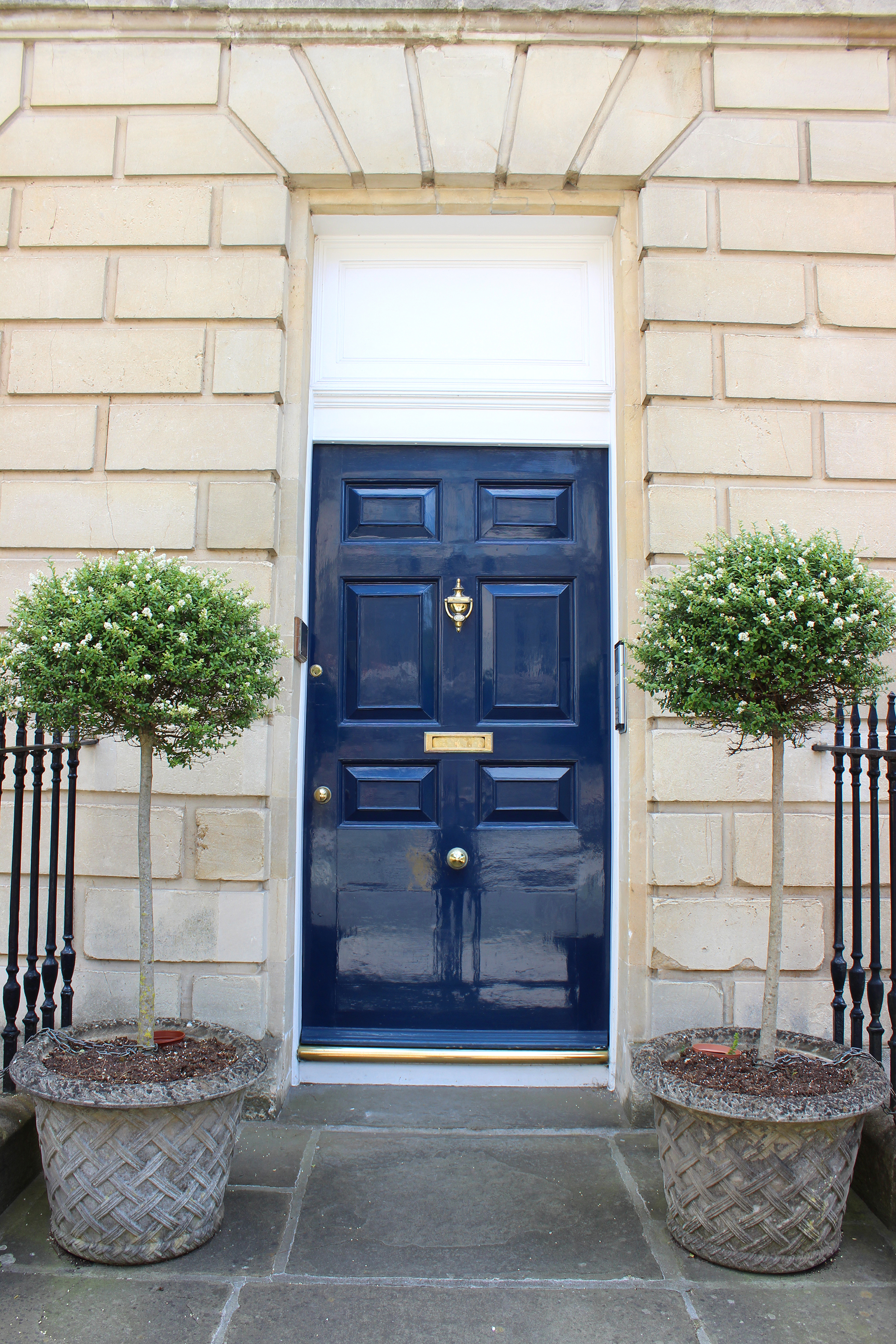
Even if you only have a small front yard, you can still grow trees in pots. When it comes to containers, the best trees for front yards differ slightly from the others on this list. Size becomes of vital importance, as the tree must be able to thrive with a constricted root area. Slow-growing trees are best for growing in pots as you won't have to constantly repot them.
There are lots of options for the best trees to grow in pots. Bay is a great choice for a classic, sophisticated look and fairs well in most areas. Olive trees are also popular for those looking to create a Mediterranean garden retreat, and as mentioned before, there are species of magnolia that can also thrive in pots.
What are the best trees to plant in your front yard?
Magnolia, crape myrtle and pink flowering dogwood are some of the best trees to plant in your front yard. ‘Look for trees that do not create a mess or create planting beds around them so the mess is masked by the surrounding plants,’ suggests certified arborist and garden expert Melinda Myers.
The best tree for your front yard will depend on the size of your yard, amount of growing space you have available as well as the climate and the severity of your summers and winters.
What is a good shade tree that is not messy?
Green giant arborvitae, silver dollar tree and southern magnolia are all good options that create garden shade – and are not messy. Since they are evergreen they do not loose their leaves in fall, meaning you don't have to clear up a host of fallen leaves, or worry about them creating an unattractive and slippery welcome to your home.

Having graduated with a first class degree in English Literature, Holly started her career as a features writer and sub-editor at Period Living magazine, Homes & Gardens' sister title. Working on Period Living brought with it insight into the complexities of owning and caring for period homes, from interior decorating through to choosing the right windows and the challenges of extending. This has led to a passion for traditional interiors, particularly the country-look. Writing for the Homes & Gardens website as a content editor, alongside regular features for Period Living and Country Homes & Interiors magazines, has enabled her to broaden her writing to incorporate her interests in gardening, wildlife and nature.